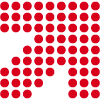Mapping Enablers and Barriers for Mobile and Digital Connectivity in Meghalaya: Scoping Study

Project Lead
Project Team
Yashita Jhurani
Location
Partners

The digital revolution has transformed human efficiency and expanded livelihood opportunities over the past two decades. In Meghalaya, where English is the official language, digital connectivity holds significant promise for advancing socio-economic development and accelerating progress toward the Sustainable Development Goals. However, this potential is constrained by persistent challenges, including the region’s difficult terrain, concerns over mobile tower radiation, and a tele-density of 80.38% as of January 2023—below the national average of 84.61%. Low volumes of UPI transactions further indicate limited digital adoption.
In response, the Meghalaya Telecom Infrastructure (Amendment) Policy 2024 was introduced to bolster telecom infrastructure, accelerate the rollout of 5G networks, and promote equitable access to digital services. However, addressing gender disparities in digital access and use remains critical. Understanding the unique barriers and enablers for women is essential to ensure inclusive progress.
In this context, the hub is undertaking a study to map the factors influencing digital connectivity in Meghalaya and explore how connectivity challenges and opportunities affect women’s adoption of digital tools across the region.

Research
Questions
Enablers and Barriers to Access and Usage



Impact on Accessing Health and Financial Services


Gender Divide in Access and Usage



Enablers and Barriers to Access and Usage



Impact on Accessing Health and Financial Services


Gender Divide in Access and Usage




Research
Questions

Policy
Implications
Insights from the study will feed into the state government’s roadmap to facilitate improved digital connectivity, especially for women. The findings will also inform targeted interventions necessary to address the unique barriers women face in accessing and adopting digital technologies, such as terrain-related challenges, digital skilling gaps, among others.


